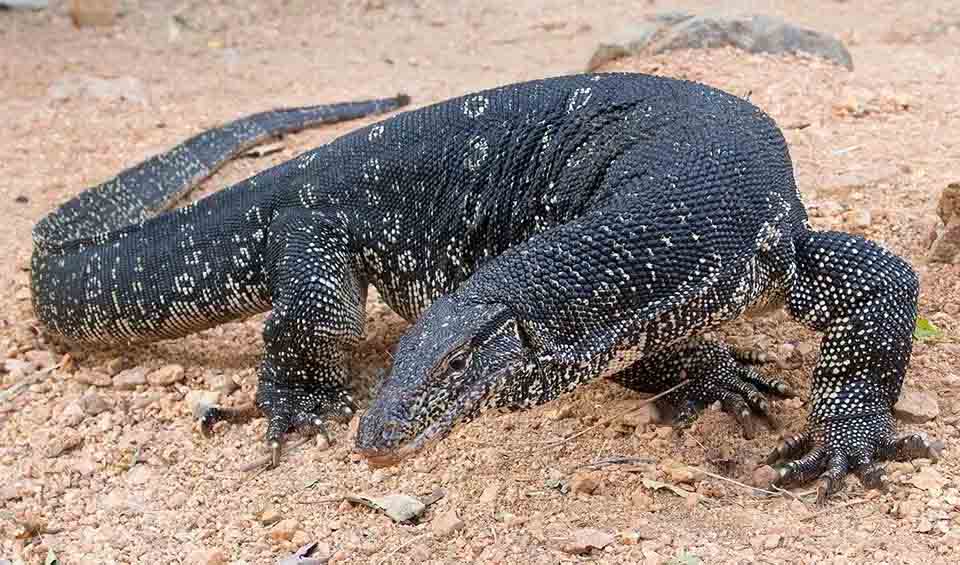It is indeed one of the most formidable lizards on our planet, second only to the Komodo dragon in size among the members of the Varanidae family. Native to South and Southeast Asia, it is a common sight across its range, which includes parts of India, Sri Lanka, Southeast Asian countries, and Indonesian islands.
Growing up to 3 meters (10 feet) in length, Asian water monitors are true giants. Their robust, muscular bodies are covered in tough, scaly skin patterned with a series of dark bands and spots that provide excellent camouflage in their natural habitat. This patterning is not just for stealth; it also plays a role in thermoregulation, as the dark colors absorb heat from the sun.
The forked tongue of the Asian water monitor is a highly specialized sensory organ, flicking out to collect scent particles from the air and water, which are then brought back into the mouth and analyzed by Jacobson’s organ. This gives the lizard a nearly unparalleled ability to detect and track down prey or escape potential threats.
Asian water monitors are opportunistic feeders with a varied diet that includes fish, frogs, birds, small mammals, and insects. They are also known to scavenge carrion, which makes them important contributors to the ecosystem as they help recycle nutrients back into the environment.
Adapted to a semi-aquatic lifestyle, the Asian water monitor possesses powerful limbs equipped with sharp claws, which aid in climbing and digging. Its strong, laterally compressed tail serves as an effective propeller in the water, making it an excellent swimmer capable of both swift surface swimming and prolonged diving
Distribution
 Bangladesh
Bangladesh Cambodia
Cambodia China
China Hong Kong
Hong Kong India
India Indonesia
Indonesia Laos
Laos Malaysia
Malaysia Myanmar
Myanmar Singapore
Singapore Sri Lanka
Sri Lanka Taiwan
Taiwan Thailand
Thailand Vietnam
VietnamAnything we've missed?
Help us improve this page by suggesting edits. Glory never dies!
Suggest an editGet to know me
Terrestrial / Aquatic
Altricial / Precocial
Polygamous / Monogamous
Dimorphic (size) / Monomorphic
Active: Diurnal / Nocturnal
Social behavior: Solitary / Pack / Herd
Diet: Carnivore / Herbivore / Omnivore / Piscivorous / Insectivore
Migratory: Yes / No
Domesticated: Yes / No
Dangerous: Yes / No





